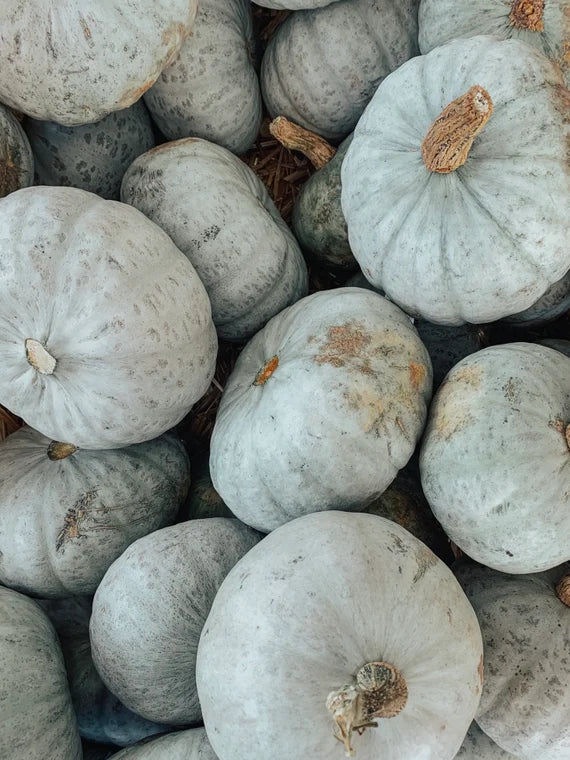Pumpkin- Baby Blue
Couldn't load pickup availability
Description
Pumpkin - Baby Blue (Cucurbita pepo) is a charming, small pumpkin variety with a soft blue-gray exterior and sweet, rich orange flesh. Known for its decorative appeal as well as its culinary uses, Baby Blue pumpkins bring a unique color to fall harvests and are perfect for smaller spaces.
Features:
Appearance: Baby Blue pumpkins are small to medium-sized pumpkins with a smooth, slightly ribbed blue-gray skin. The compact size makes them ideal for tight spaces or container gardening.
Size: Typically weighing between 5–8 lbs, the pumpkins have a squat, round shape and a light bluish color that deepens as they mature.
Flesh: The flesh is vibrant orange, dense, and sweet, offering great flavor for cooking and baking. It’s perfect for pie making, soups, and roasted dishes.
Uses:
Culinary: Baby Blue pumpkins are versatile in the kitchen. Their sweet flavor and creamy texture make them a great choice for pumpkin pies, soups, curries, roasting, or pureeing for smoothies.
Decorative: Their attractive appearance makes them ideal for fall décor. They are often used in autumn arrangements, harvest tables, and Halloween displays.
Storage: The pumpkin has a durable skin, making it excellent for long-term storage after harvesting. They can last for several months if stored in a cool, dry, and well-ventilated space.
Planting Instructions:
Soil: Baby Blue pumpkins grow best in rich, well-drained soil. A slightly acidic to neutral soil pH (6.0–7.0) is ideal. Enriching soil with compost will provide the nutrients needed for healthy growth.
Planting Time: Plant Baby Blue pumpkin seeds after the last frost when the soil has warmed. In cooler climates, you may wish to start seeds indoors 3–4 weeks before the last frost and transplant after the risk of frost has passed.
Spacing: Plant seeds 1 inch deep, with a spacing of 36–48 inches between plants to allow enough room for the vine to spread. Rows should be spaced 48–72 inches apart to ensure healthy growth and good air circulation.
Planting Tips: Consider growing Baby Blue pumpkins on a trellis if space is limited. They can also be trained to climb, saving space and improving air circulation to reduce disease risks.
Growing Instructions:
Sunlight: Choose a location that receives full sunlight for at least 6–8 hours a day, as pumpkins need plenty of sun to thrive.
Watering: Water your pumpkin plants consistently, especially during dry spells, to ensure that they receive enough moisture. Deep watering is best to encourage strong root systems. Avoid overhead watering as wet leaves may promote disease.
Fertilizing: Apply balanced fertilizer before planting and every 4–6 weeks during the growing season. Use compost to supplement natural nutrients.
Mulching: Mulch around the base of the plant to retain moisture, control weeds, and protect the fruit as it develops.











